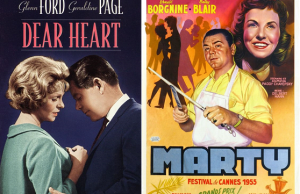Samson and Delilah (1949)

Toronto Film Society presented Samson and Delilah (1949) on Sunday, March 8, 1981 in a double bill with Cobra Woman as part of the Season 33 Sunday Afternoon Film Buff Series, Programme 7.
Samson and Delilah was DeMille’s sixty-eighth picture, and his third last. It was to be followed only by The Greatest Show on Earth and The Ten Commandments, both of which titles affirm that he was still reaching for the biggest topic of all as his career drew to a close. DeMille is said to have once remarked, “Give me a page of the Bible, and I’ll give you a picture.” Or, as one wag put it, noting the director’s free-and-easy treatment of the Book: “Cecil B. DeMille,/ Much against his will,/ Was persuaded to leave Moses/ Out of the Wars of the Roses.”
In fact, it is doubtful whether DeMille ever did much against his will. He stands as the prototype of the successful director as autocrat from the early days of the industry to the wide-screen days of the ’50s, so presented for all to see, in the very year of Samson and Delilah, in Billy Wilder’s Sunset Boulevard. In the twenties, when Griffith had had to bend his neck to the studio yoke, DeMille continued to make his own kind of picture, and the justification of the latitude he was allowed was, of course, the box office. On the foundation of his early sex-comedies (Male and Female, Old Wives for New, Forbidden Fruit, and many others), which brought together prurience with moral preachment, he built his masterpiece, the first Ten Commandments (1923), in which he gets it supremely both ways, as the commandments are held up to us one by one for our edification, and broken one by one for our titillation, A quarter of a century later, Samson and Delilah is still successfully working the same vein: Samson is the incarnation of the Judaeo-Christian rebellion against Paganism, and Hedy Lamarr’s sexuality upstages without entirely blurring that message.
The New Yorker saw what he was about: “It may be said of Cecil B. DeMille that since 1913…he has never taken a step backward. He has never taken a step forward, either, but somehow he has managed to survive in a chancy industry where practically everybody is incessantly going up, down, or sideways, and only the dead are ordinarily still. Perhaps DeMille’s survival is due to the fact that he decided in his movie nonage to ally himself with God as his co-maker and to get his major scripts from the Bible, which he has always handled with the proprietary air of a gentleman handling old love letters. In Samson and Delilah, DeMille is back on his old beat, but this time I’m not at all sure that he has produced a work that enhances the glory of him or his Associate.”
Variety was more sympathetic: “It’s a fantastic picture for this era in its size, in its lavishness, in the corniness of its story-telling and in its old-fashioned technique. But it adds up to first-class entertainment. The smarties and the hinterlanders will view it from diametrically opposed standpoints, but whether laughing at it or with it, neither the hepsters nor the squares will find any of its two hours and eight minutes dull or unenjoyable. And as for the kids, Samson is the greatest invention since Superman….”
And the New York Times balanced the two views: …if ever there was a movie for DeMillions, here it is. For Mr. DeMille, that veteran genie who has already engineered three quasi-religious film pageants that tower in the annals of the screen, has here led his carpenters and actors and costumers and camera crews into the vast manufacture of a spectacle that out-Babels anything he’s done. There are more flowing garments in this picture, more chariots, more temples, more peacock plumes, more animals, more pillows, more spear-carriers, more beards, and more sex than ever before. At least, that’s the sizable impression which Mr. DeMille has achieved by bringing together the Old Testament and Technicolor for the first time.
Ready when you are, C.B.
Notes by Barrie Hayne, Quotations by Helmuts Drengers













[…] tomb captured the imaginations of westerners, and the film industry. For decades after, stars like Hedy Lamarr donned stunning costumes made of assuit for roles like Deliah, in Paramount’s Sampson and […]